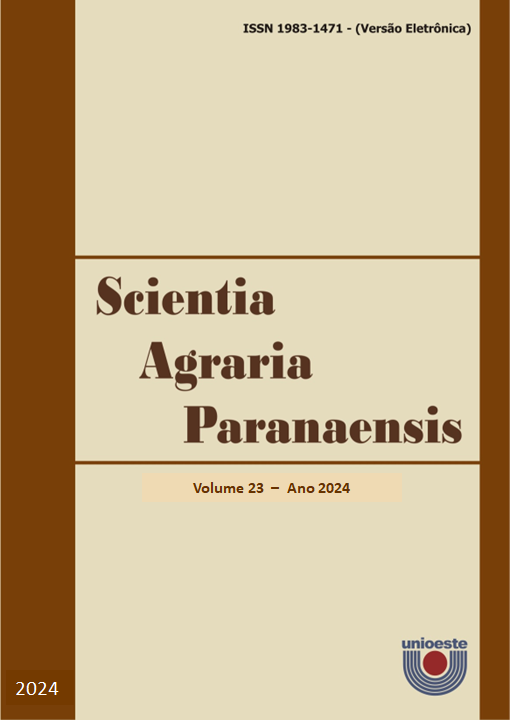Biosolid and coffee straw in the substrate composition of ‘Cravo’ lemon tree seedling
DOI:
https://doi.org/10.18188/sap.v23.32450Resumo
The selection of an appropriate substrate promotes optimal growth and initial development of plants. Increasingly, organic residues are incorporated into substrate compositions due to their physicochemical characteristics, including biosolids and coffee husks. This study hypothesizes that biosolids and coffee husks can serve as alternative substrates in the initial production of ‘Cravo’ lime rootstock seedlings. The experiment was conducted in two phases using a randomized block design, consisting of seven treatments and four blocks, each block comprising ten plants. The treatments included mixtures of commercial substrate (CS), biosolids (BIO), and coffee husks (CH) in the following proportions (v/v/v): 50:50:0 (T1), 50:40:10 (T2), 50:30:20 (T3), 50:20:30 (T4), 50:10:40 (T5), 50:0:50 (T6), and 100:0:0 (T7). In Experiment 1, the seven treatments were evaluated up to 140 days after planting, while in Experiment 2, treatments T1, T3, T6, and T7 were evaluated up to 260 days. The variables measured included plant height (cm), stem diameter (mm), number of leaves, leaf area (cm²), root length (cm), dry biomass (g), growth ratios (height/diameter and shoot dry mass/root dry mass), and the Dickson Quality Index (DQI). The use of residues such as coffee husks and biosolids represents a viable alternative for producing ‘Cravo’ lime rootstock seedlings. Coffee husks can be used in proportions of up to 50% of the substrate volume. Biosolids can also be utilized at a proportion of 50% of the commercial substrate. Furthermore, a substrate formulation containing both residues comprising 50% commercial substrate, 30% biosolids, and 20% coffee husks can be developed without compromising the growth of ‘Cravo’ lime seedlings.
Downloads
Publicado
Como Citar
Edição
Seção
Licença
Aviso de Direito Autoral Creative Commons
Política para Periódicos de Acesso Livre
Autores que publicam nesta revista concordam com os seguintes termos:
1. Autores mantém os direitos autorais e concedem à revista o direito de primeira publicação, com o trabalho simultaneamente licenciado sob a Licença Creative Commons Attribution que permite o compartilhamento do trabalho com reconhecimento da autoria e publicação inicial nesta revista.2. Autores têm autorização para assumir contratos adicionais separadamente, para distribuição não-exclusiva da versão do trabalho publicada nesta revista (ex.: publicar em repositório institucional ou como capítulo de livro), com reconhecimento de autoria e publicação inicial nesta revista.
3. Autores têm permissão e são estimulados a publicar e distribuir seu trabalho online (ex.: em repositórios institucionais ou na sua página pessoal) a qualquer ponto antes ou durante o processo editorial, já que isso pode gerar alterações produtivas, bem como aumentar o impacto e a citação do trabalho publicado (Veja O Efeito do Acesso Livre).
Licença Creative Commons
Esta obra está licenciada com uma Licença Creative Commons Atribuição-NãoComercial-CompartilhaIgual 4.0 Internacional, o que permite compartilhar, copiar, distribuir, exibir, reproduzir, a totalidade ou partes desde que não tenha objetivo comercial e sejam citados os autores e a fonte.


